There are a few satisfactory moments in a working day that we all have in common. One of those is scratching a task on a to-do list. Some prefer to do it on paper while others enjoy marking it done on a task management app. Today’s article is not about how to complete tasks, but rather choosing between two of the most popular Microsoft tools for task management – Planner vs Lists.
Breaking down the Planner app
As the name suggests, Microsoft Planner is a task management and planning application. Its key feature is that it employs the Kanban board concept to manage tasks in a visual manner. The Kanban board, invented in Japan by car manufacturer Toyota in the late 1940s, enables simple tracking of large-scale projects through a simple drag-and-drop interface. Each task appears as a card that can be moved across columns such as “In Progress” or “Ready for Review.”
Planner is fully integrated with Microsoft Teams, which means you can add a Kanban board as a dedicated tab to any Teams channel. Team members can access Planner at any time and manage their tasks as needed.
In addition to the Kanban-based project management, Planner offers the following features:
- An easy-to-use drag-and-drop interface. Once created, any team member can drag and drop tasks to quickly update task status.
- Task cards with a lot of information. Simply click on any of the cards to reveal options such as due dates, assigned team members and more.
- Status updates at any time. With an automatically generated insights dashboard that includes bar charts and more, you can get a quick overview of where your projects stand.
- Accessibility and adaptability. Microsoft Planner is accessible via the Microsoft 365 / Office.com app selector in your web browser. It’s also available for iOS and Android devices.
If you want to learn more about Planner with Teams, head over to this blog post.
→Download White Paper: Microsoft Teams & Planner Best Practices
How to use the Planner app?
To start using the Planner app within Teams, you need to add it from the App store and we recommend to pin it to the tab bar of the team where you plan to use it.
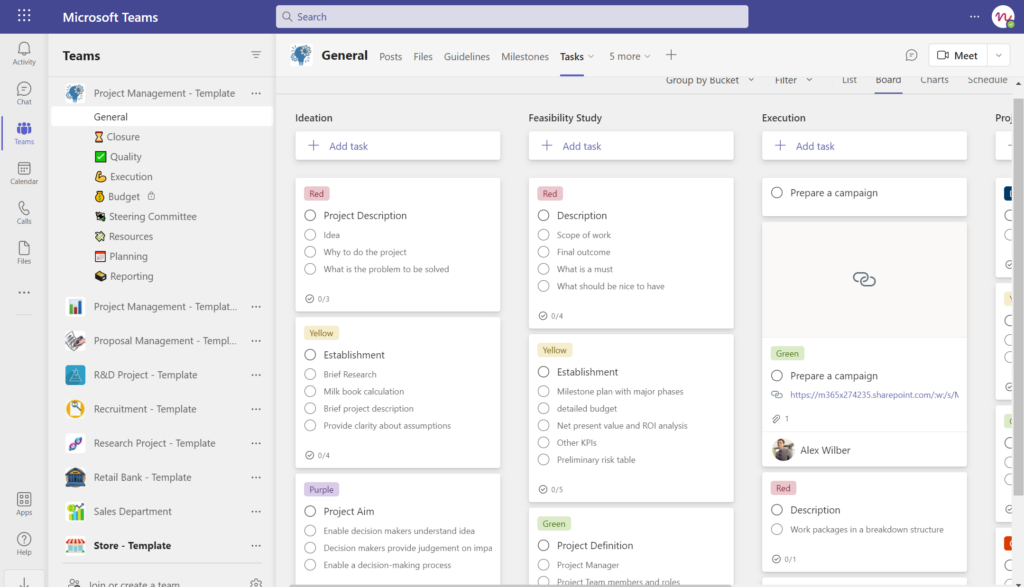
When it’s installed, you can create a plan, add tasks, create new buckets or comment on existing tasks. If you click on Charts or Schedule, you will be able to track your own tasks.
Within each task, you can indicate if it’s a priority, update the status, set up a start and a due date, leave notes for the employee responsible for the assignment and even create a checklist within the task.
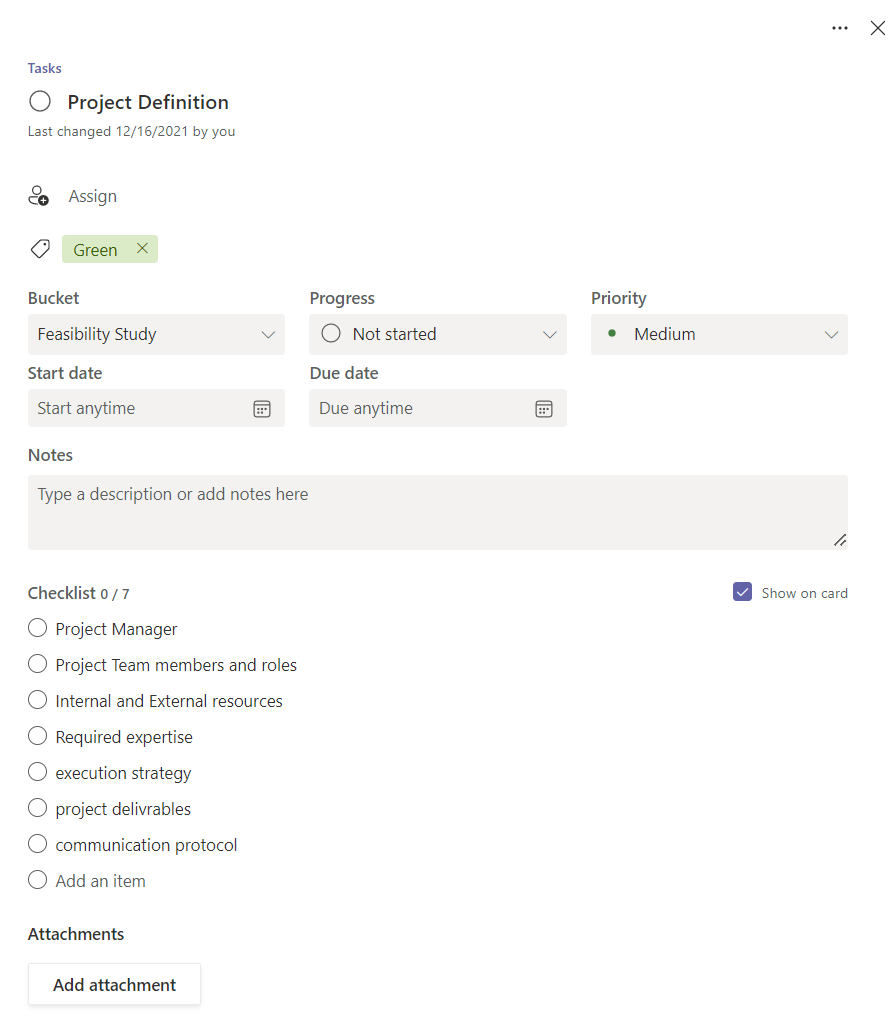
When should you use Microsoft Planner?
Microsoft Planner is best suited for high-level management of individual project tasks due to its emphasis on visual task management. For example, it’s an excellent task management platform for a team of developers, project, and product managers working on the same piece of software. It will help visually track the various development modules.
Moreover, Planner can be used in conjunction with existing groups from Outlook, Teams, or even Yammer. It makes it simple to visually track the progress of large projects at a glance. In addition to the larger progress, each member of the group can see only their tasks, giving them a clear picture of what’s on their plate.
Benefits of using Microsoft Planner
In short, Planner offers the following benefits:
- Ready to use Out-of-the-box.
- Integration with To-Do Lists.
- A number of built-in views are available to help you organize and group tasks.
- Easily integrates with Outlook so you can get notifications on upcoming tasks.
One downside of using Planner is that it is not possible to add custom metadata fields. Also, there is no such thing as granular security (everyone has the same access to a plan).
Microsoft Teams & Planner: Best practices
Learn how to make the most of Teams & Planner integration and build teams with pre-built Planner task boards
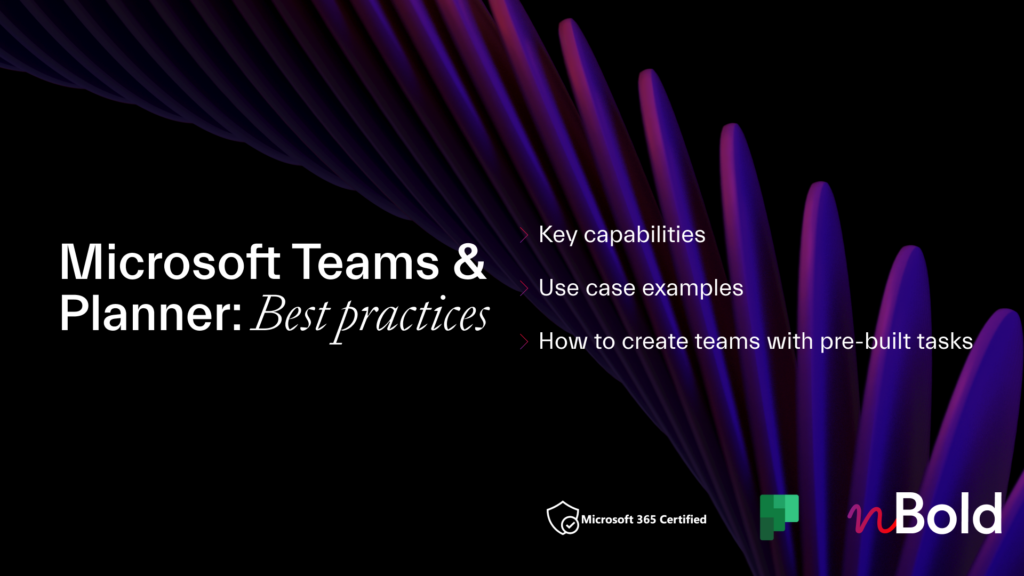
Breaking down the Lists app
We will go through the differences between Planner and Lists in a minute. But very briefly, Lists is a more advanced app than Planner. It goes beyond organizing and task management. It stands out with its use of a tabular format with custom columns, making it adaptable to almost any need.
The key features of Lists include:
- Create, share, and track lists within your team. You can even create a list by importing an Excel spreadsheet.
- Take advantage of available templates (e.g., work progress tracker, patients, incidents, etc.) to develop new lists.
- Depending on the nature of your list, you can indicate items, provide descriptions, the status, who is responsible for it, and any other relevant category.
- Grant access to any team member by just entering their name or email.
- Set up filters to easily sort and organize the available data.
Learn more about Microsoft Teams and Lists integration.
How to use the Lists app?
To get started with Lists in Teams, go to the channel where you want to add it, click on the + icon on the tab bar, search Lists and add it to your apps. When you’re done, there are four ways that you can create a list:
- Blank list
- Import from Excel
- Use an existing list
- Use a template
The templates are quite diverse, so do take advantage of them.

For instance, if you need a list of prospective candidates, you can use the Recruitment tracker template and your list may look something like this:
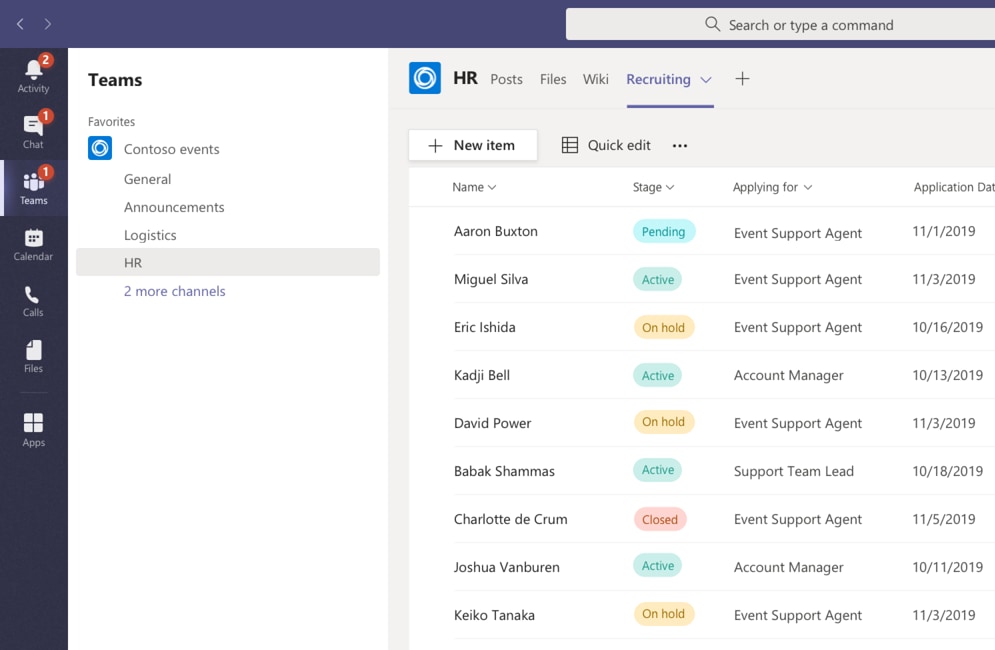
Within each item, in this case each candidate, you can fill out details such as the position they’ve applied for, upload their CV, indicate the interview date, etc.
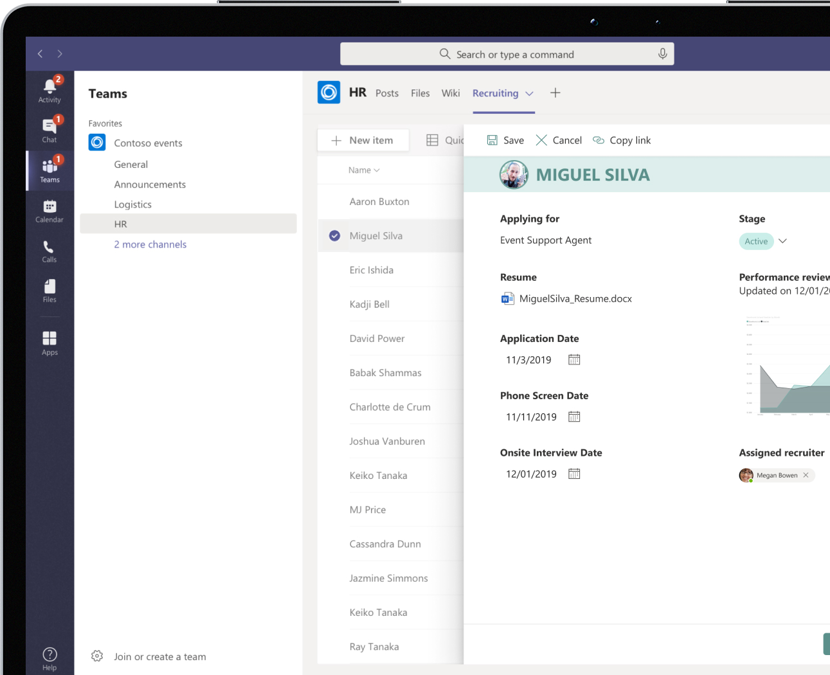
Benefits of using Microsoft Lists
Consider using Lists for the following benefits:
- Microsoft Lists can serve as a central repository for all your team’s tasks. You can assign tasks to your team, update the status of those tasks, and even have threaded conversations.
- Because of the close integration with Microsoft Teams, you can meet and collaborate on lists at any time.
- You can make as many lists as you want and access them all from a single view. You can also see the tasks that other users have been assigned to.
- View and manage your lists from any location using a web browser, Microsoft Teams, or the mobile version.
- Advanced automation workflows, meaning that you can set rules when certain events occur within a list. For example, when an item is added to a list, an email notification is sent.
- Use built-in templates to quickly create lists such as issue trackers, new hire checklists, and more.
- If you have a large-scale project with many moving parts and people involved, Microsoft Lists is an excellent tool for keeping track of every detail.
Microsoft Planner vs. Lists
We already quickly noted that Lists is more advanced than Planner. Advanced in this sense applies to adaptability and flexibility. Lists is great for teams that need to customize their tasks and add additional metadata. For example, you can add location, name of the client, name of the supplier, department responsible for the task, and any other element that describes your tasks. In this way, Lists allows more customized task management.
Use Lists for a more personalized experience in which you want to control the task fields, their options, layout, views, and more. You might also prefer Lists if you’re attempting to manage things that aren’t strictly tasks. For instance, inventory management, asset management, event itineraries, or travel planning. Tasks (and other list items) can be viewed in a list or calendar view.
On the other hand, if you want a quick, easy, simple, and user-friendly project management tool, use Planner. It is very effective as it includes a plethora of fields for your tasks, integrates with To Do and Tasks in Teams, and works well for both agile and waterfall project management, particularly for small teams (i.e., not enterprise portfolio management). Tasks can be viewed in a board or calendar view, and a nice dashboard overview is included.
There are many similarities between Microsoft Planner and Microsoft Lists. Both can be used for task management, but while Planner focuses on tasks that must be done to complete a project using a Kanban board, Microsoft Lists is far more flexible and customizable.
What about Tasks in Teams and To Do?
In addition to Planner and Lists, you might have heard or come across other apps that seem to perform similar functions. The two most common ones are Tasks and To Do. So, let’s talk about them and understand what they have to offer.
What is Microsoft To Do?
In some ways, Microsoft To Do combines the previous two apps.
It’s essentially a method for you to keep track of your individual tasks. That is, any tasks assigned to you, whether directly in Microsoft To Do or through Planner, will appear as items in the Microsoft To Do app.
One of the best features of To Do is its ability to balance your assigned tasks with those you create yourself. That means Microsoft To Do is quite versatile in terms of how it can be used. You can use its “My Day” feature to automatically sort tasks for your day, or you can do it all manually and create a play-by-play for the day.
So, whether you receive regular assignments within Teams, the majority of which will appear in To Do, or you simply need a quick way to jot down your own smaller tasks for the day, Microsoft To Do is an excellent choice.
To Do is ideal for managing your tasks on a daily basis and assisting you in creating your personal schedule.
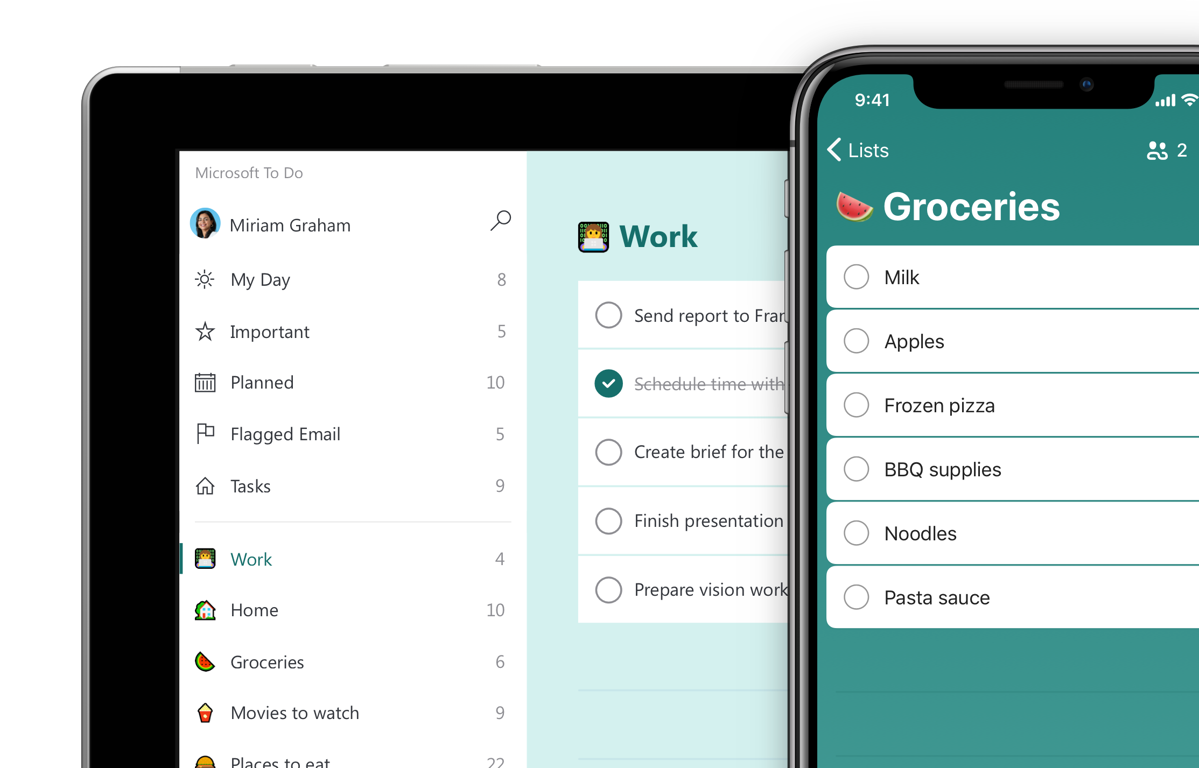
And what about Microsoft Teams Tasks?
Tasks allows you to view all of your tasks within Microsoft Teams. It is essentially a method of centralizing all of the tasks assigned to you in Microsoft Planner and your personal To Do list in Microsoft Teams. For most users, Microsoft Teams is the hub of their workday, so while Teams Tasks doesn’t actually do any work, it serves a useful purpose by centralizing tasks in an easy-to-digest format.
You can use Teams Tasks if you want a centralized list of your tasks, especially one with a great mobile app and the ability to set due dates and reminders. It also divides your tasks by Plan and Team, allowing you to focus on tasks by project and deliverable rather than an endless list of tasks assigned to you to complete today.

As you can see each of these apps have their merits and it’s up to you, your working habits, and your needs to choose one. Task management and organization tools need to be uniform across the company, so it’s important that you choose one general tool and have it in all of your virtual workspaces. You can either add them to relevant teams and add all the elements manually or fasten the process through collaboration template solutions like nBold and scale the process. nBold allows you to create Planner and Lists templates. In this way, you create task boards in Planner or Lists with all the right elements just once at the template level, and then create as many teams as needed. Each one of them will replicate the structure, documentation, tasks and other content of the template.
Learn more about nBold solutions
Final thoughts on Planner vs Lists dilemma
Microsoft is making every effort to provide comparable functionality so that you get the most bang for your buck, all while keeping your task and list information protected by world-class data protection and security.
Microsoft Lists is ideal for situations where you require greater flexibility and customization. Its real value is that it can handle projects that aren’t solely made up of tasks. Planner, on the other hand, is a fairly straightforward solution that will help you and your team stay on top of your tasks. Another important factor is the growth of the product. Planner is not evolving progressively while Lists is developing more consistently.
Our last piece of advice is when deciding what to use, keep the ideas above in mind. Remember that if what you choose doesn’t seem to work, you should sit down with your team, discuss what you want to see, and experiment with another app to settle for the one that can get you the closest to your goal.
